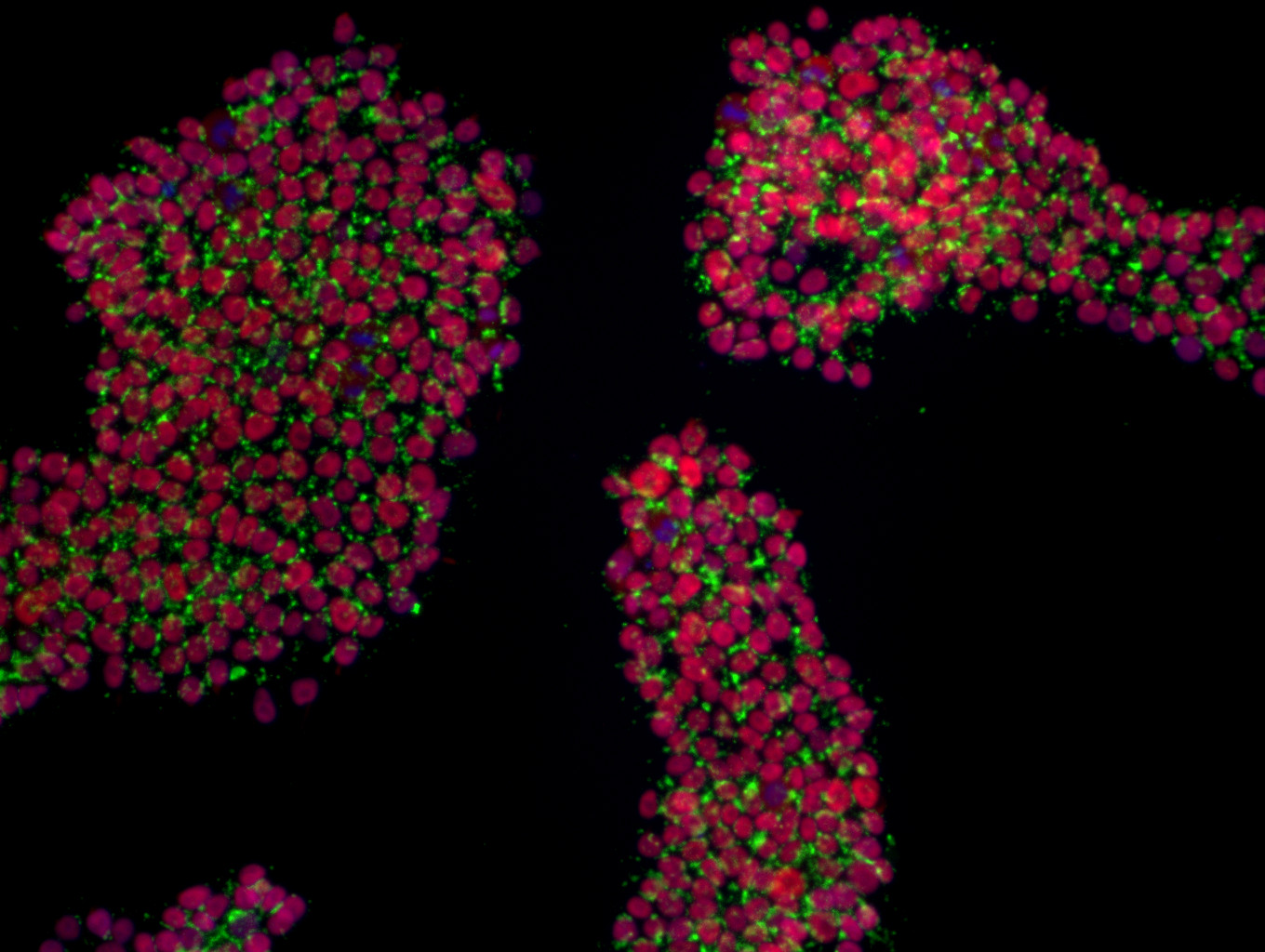
There are high expectations for cell therapy using induced pluripotent stem (iPS) cells, and clinical trials have been in progress using differentiated iPS cells, such as retinal and neural cells. While all transplantations so far have used iPS cells derived from healthy individuals, in the future, the transplantation of iPS cells that are genetically modified by genome editing is expected to enhance their therapeutic effects. Therefore, we transplanted genome-edited iPS cells into model mice of Fabry disease, which is caused by genetic deficiencies or reduced activity of the lysosomal enzyme, alpha-galactosidase (GLA), to investigate whether therapeutic molecules could be supplied in vivo. We transplanted iPS cells that secrete a modified form of alpha-N-acetylglucosaminidase (mNAGA), which can restore lost GLA activity without eliciting an immune response, into model mice of Fabry disease and confirmed the therapeutic effects.

Ittetsu Nakajima (graduate student), Terumi Ono (then graduate student), and Yuichiro Miyaoka (Project Leader) from the Regenerative Medicine project in collaboration with Dr. Hiroshi Shitara (division leader) from Animal Research Division, and Dr. Hitoshi Sakuraba and Dr. Tadayasu Togawa from Meiji Pharmaceutical University established iPS cells that express and secrete mNAGA by genome editing. First, they co-cultured the mNAGA-expressing iPS cells with Fabry disease model iPS cells and confirmed that GLA activity in the Fabry disease model cells could be restored by mNAGA-expressing iPS cells. Next, they transplanted the mNAGA-expressing iPS cells into model mice of Fabry disease, and observed the restoration of GLA activity in the liver. This study demonstrated the potential for in vivo supply of therapeutic molecules through genome-edited iPS cell transplantation. While this study focused on Fabry disease, the same strategy is applicable to other diseases as well.